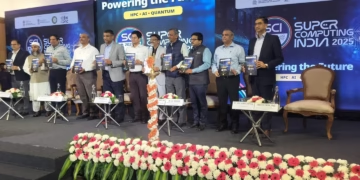New Delhi, 2nd November 2018: In view of the current liquidity crisis faced by Indian economy, ASSOCHAM Secretary General, Mr Uday Kumar Varma voiced industry concerns and the growing unease among investors and businesses at large.
He highlighted that due to the various factors that have triggered this liquidity crunch, beginning with the IL&FS default and measures to keep the Rupee from depreciating further, the money markets have seen higher costs of borrowing capital. He further added that in view of the liquidity challenges, monetary policy easing by way of lowering interest rates would give the necessary boost to investor confidence.
Mr Varma highlighted that while the Government continues to undertake favourable measures and its progressive policies have catapulted India to the 77th rank in Ease of Doing Business, certain segments such as NBFCs and MSMEs have been affected by this crisis. This warrants serious attention, given the fact that NBFCs being the strong link between the banks and the MSMEs are under serious stress.
For India to transition from being a developing to a developed economy with commensurate norms, it is pertinent that growth of 7-9% be maintained to improve per capita income. This calls for a radical shift towards flexible policies amidst a conducive environment, rather than continuing on a stringent regulatory path. This would ensure nimble responsiveness towards an ever-changing global environment.
Outlining a similar scenario in the US in 2008, when faced with a liquidity crisis, their government and regulators stepped in by inducing funds to the tune of USD 800 bn through the Troubled Asset Relief Program (TARP), to stabilise the country’s financial system and restore economic growth. The economy utilised only half of the funds and rebounded to return USD 400 bn to the government with adequate returns.
Similarly, in India, it is recommended that RBI provide a liquidity credit line of INR 30,000-40,000 crore to NBFCs, as a measure of temporary relief. Since various sectors in India are inter-linked, this would give a fillip to the MSMEs and other areas such as infrastructure, employment generation, labour, manufacturing, FMCG, steel and cement consumption, which in turn will give a boost to the overall industry and create a multiplier positive cascading effect leading to employment generation.
Seeking urgent attention to this crisis, he appealed for immediate measures to infuse liquidity into the system by RBI. He reiterated the need for decisions to be guided by public interest and the requirements of the Indian economy, given that there are multiple trade influences and factors.
